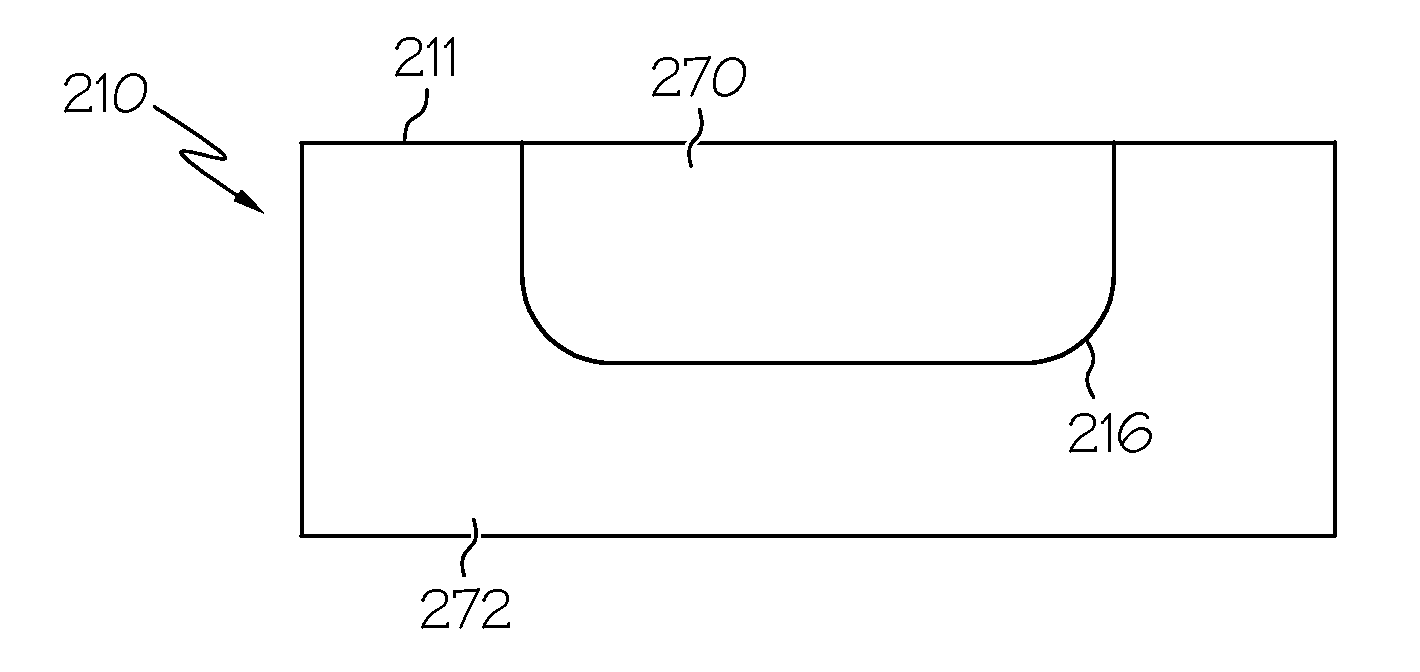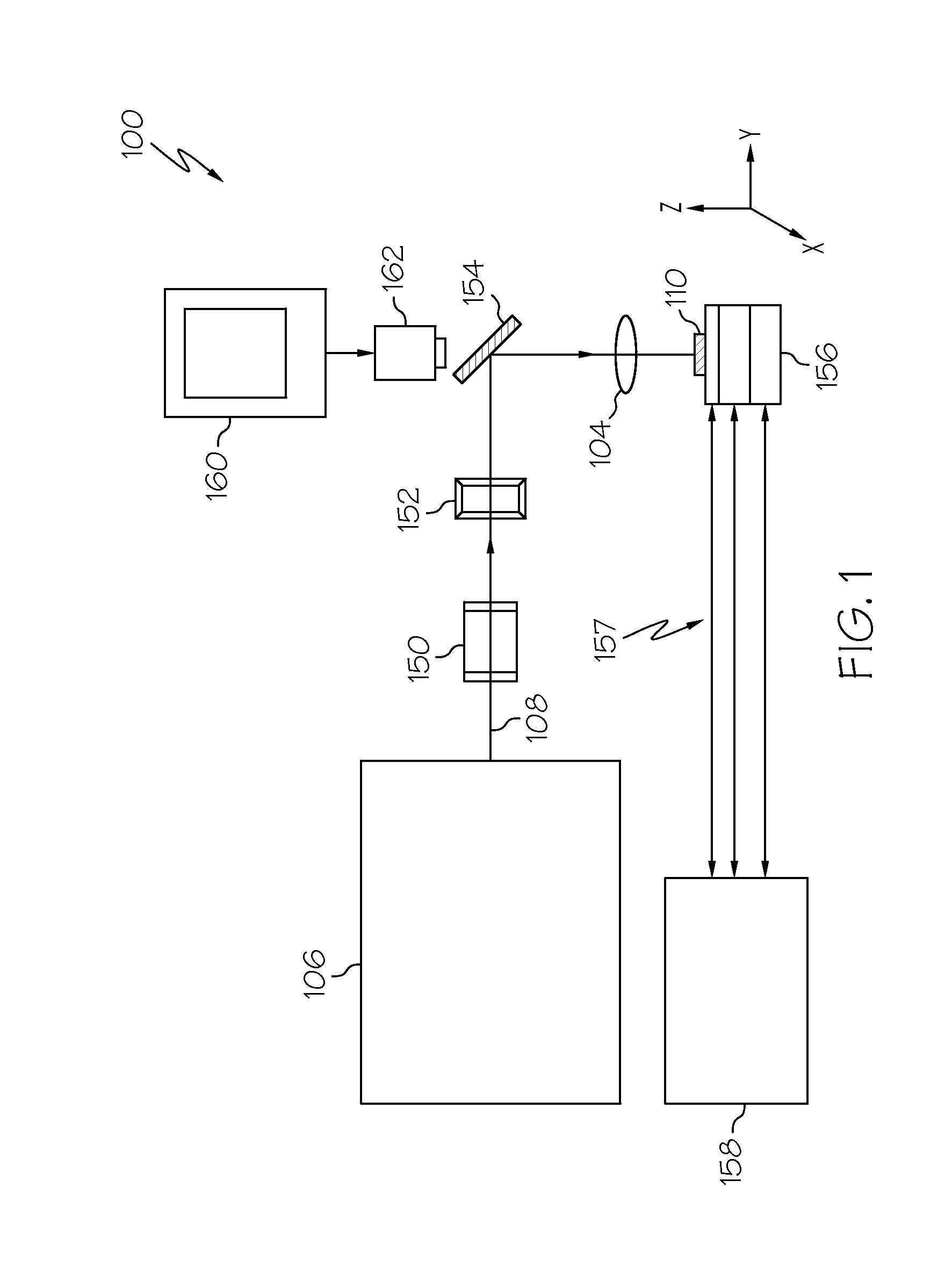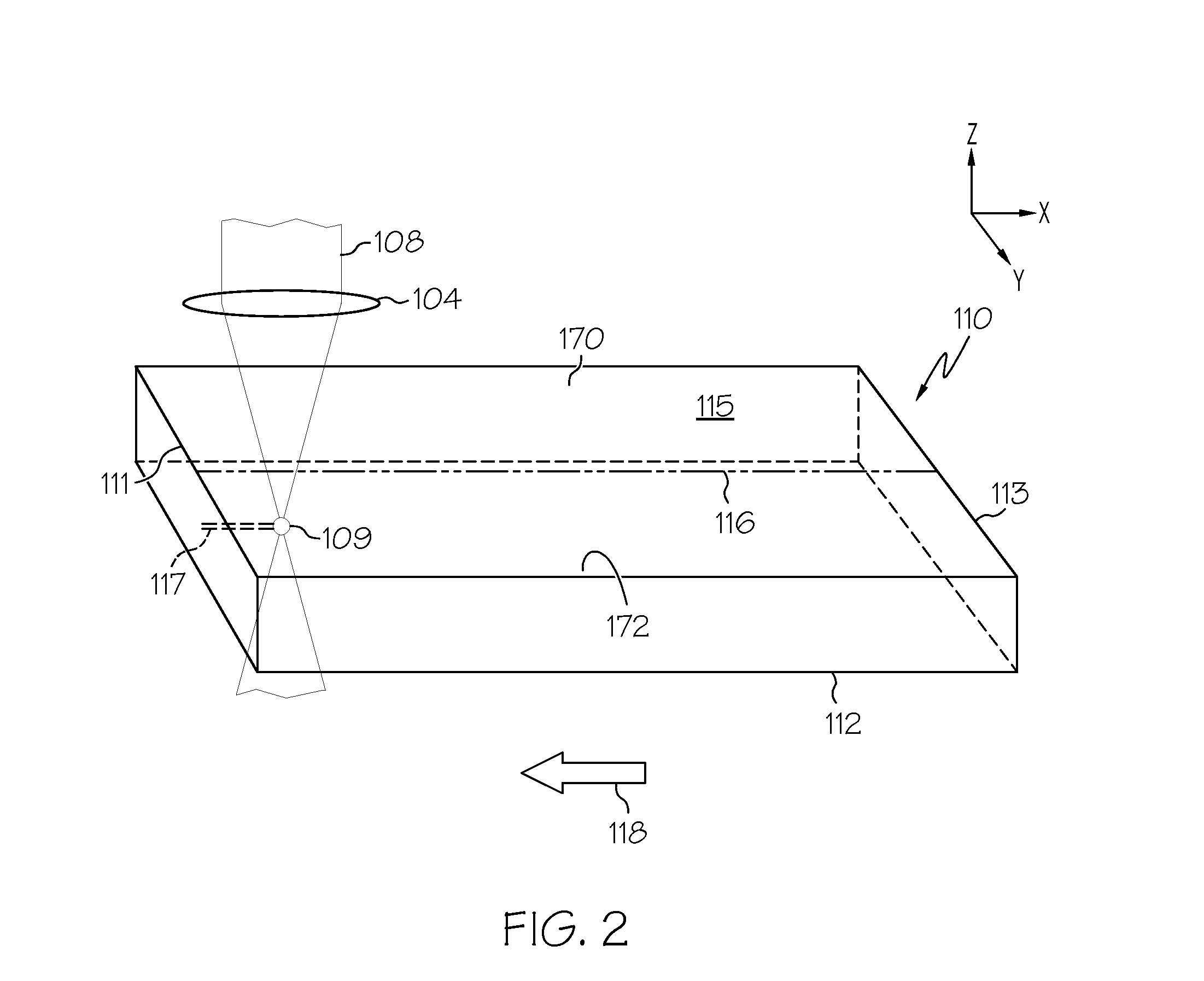Methods for laser cutting articles from ion exchanged glass substrates
a technology of ion exchanged glass and laser cutting, which is applied in the direction of glass reforming apparatus, glass making apparatus, glass making tools, etc., can solve the problems of difficult mechanically scribe glass, damage to glass substrate, and glass breaking in an explosive manner
- Summary
- Abstract
- Description
- Claims
- Application Information
AI Technical Summary
Benefits of technology
Problems solved by technology
Method used
Image
Examples
Embodiment Construction
[0024]Reference will now be made in detail to various embodiments for cutting chemically strengthened glass substrates, examples of which are illustrated in the accompanying drawings. Whenever possible, the same reference numerals will be used throughout the drawings to refer to the same or like parts.
[0025]As described herein, methods for cutting an article from a chemically strengthened glass substrate may generally comprise focusing a beam waist of a pulsed laser beam into an inner tensile region of the glass substrate. The glass substrate may be strengthen by an ion exchange process, for example, or any other process capable of creating surface compressive layers in the glass substrate. The beam waist may be translated along a cut line in a first pass, traverse an edge of the glass substrate during the first pass, and then be translated again along the cut line in a second pass such that the beam waist traverses the edge of the glass substrate. A crack propagates from the edge o...
PUM
| Property | Measurement | Unit |
|---|---|---|
| Time | aaaaa | aaaaa |
| Length | aaaaa | aaaaa |
| Speed | aaaaa | aaaaa |
Abstract
Description
Claims
Application Information
 Login to View More
Login to View More - R&D
- Intellectual Property
- Life Sciences
- Materials
- Tech Scout
- Unparalleled Data Quality
- Higher Quality Content
- 60% Fewer Hallucinations
Browse by: Latest US Patents, China's latest patents, Technical Efficacy Thesaurus, Application Domain, Technology Topic, Popular Technical Reports.
© 2025 PatSnap. All rights reserved.Legal|Privacy policy|Modern Slavery Act Transparency Statement|Sitemap|About US| Contact US: help@patsnap.com



